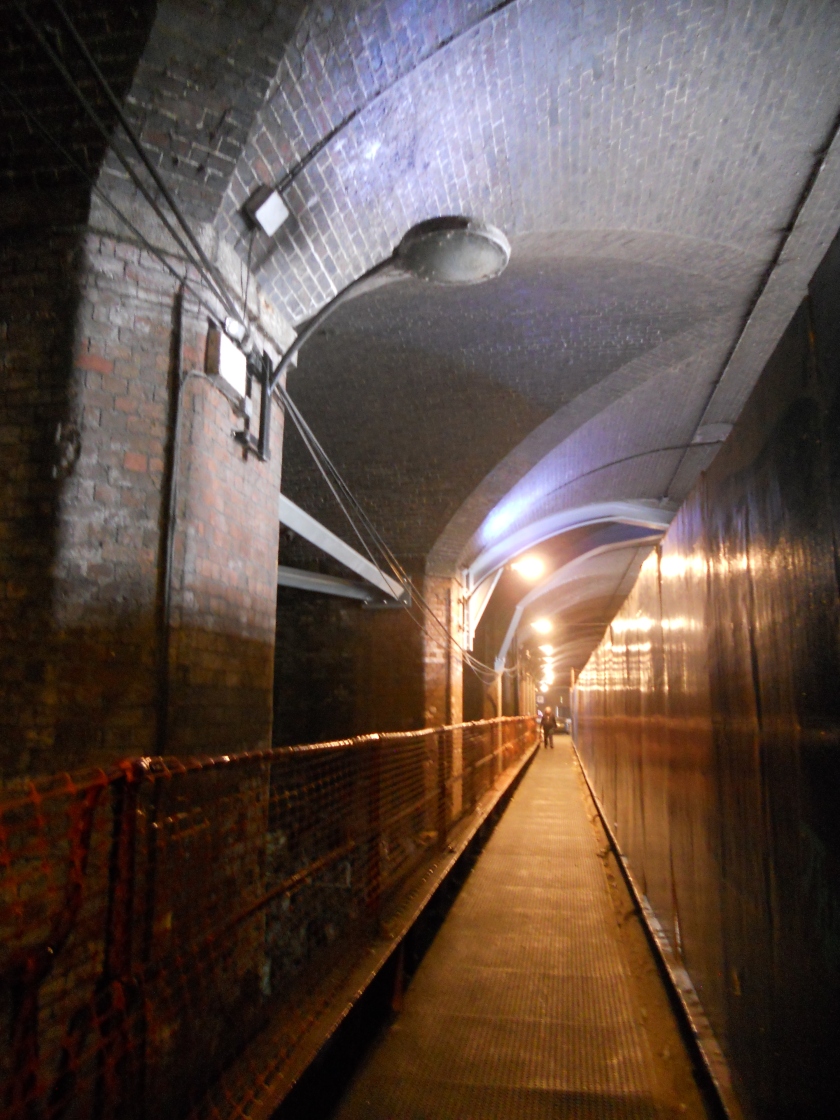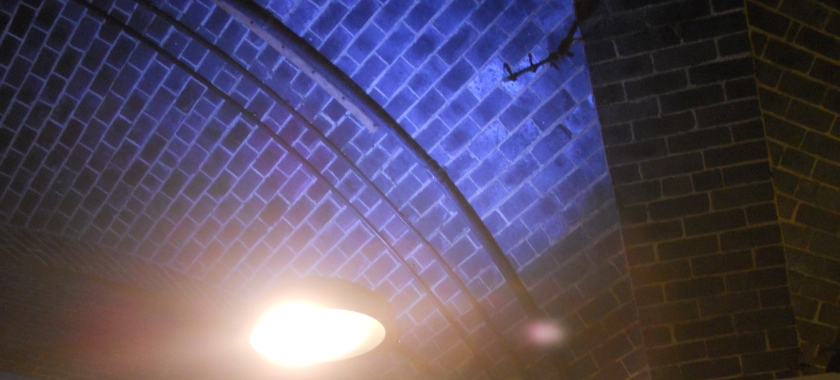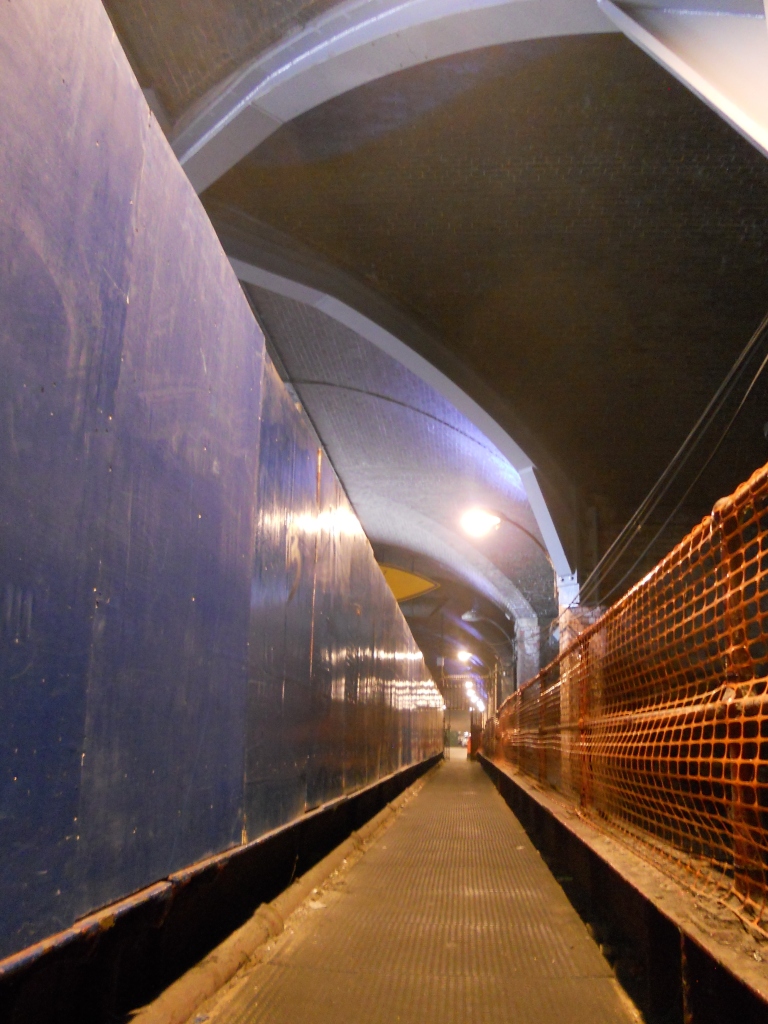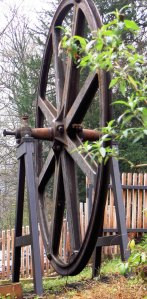
Some places cry out to be settings in a story. The space beneath the brick arches supporting Leeds station as it spans the river is one such.
When I took these pictures it had been even darker than usual: building-work had blocked off the daylight that would have come from the open, south-facing vaults.
I stood on this narrow bridge which spans the river’s four concrete channels, each with its own brick-lined tunnel. What if I were being chased for my life across it: out of breath, heart pounding…

If I leapt over those railings with their bright orange builders’ netting, down into one of the channels, would I increase my chances of getting away?

Might I mistime the jump? And if I did, would that blue-lit pattern of bricks be the last thing I saw?

The river here is shallow enough to wade in: I can see brickwork under the vees of the waves. Or I could make it to that ledge and through the steel gate.

Lost them!
Phew!
I slow to a walk in the deserted vaults.
All I can hear is my heart thumping, my laboured breaths.
Four dark tunnels, and the rush from the Aire.
Yes, that’s the river’s name.









